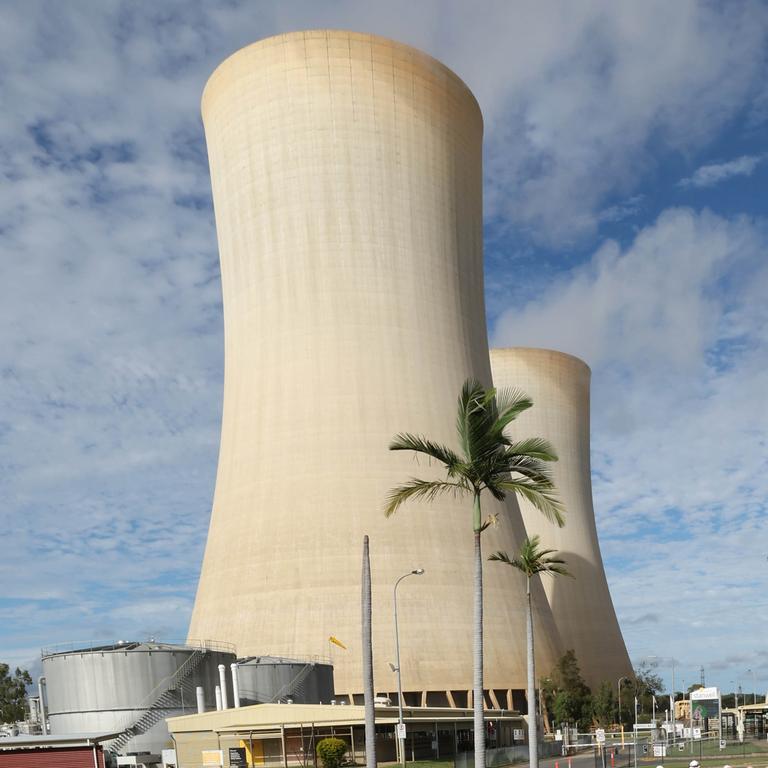Qld’s CS Energy, Stanwell face class action over electricity prices
Two state-owned electricity generators allegedly manipulated the price bracket of their wholesale power packages to create massive artificial spikes in energy market prices for their own profit, a court has heard.
Police & Courts
Don't miss out on the headlines from Police & Courts. Followed categories will be added to My News.
Two state-owned electricity generators allegedly manipulated the price bracket of their wholesale power packages to create massive artificial spikes in energy market prices for their own profit, a court has heard.
In one alleged instance of the commercial bidding strategy, power prices gradually increased from $40.67 per megawatt hour to $299.95 over 25 minutes, before abruptly spiking at $12,700 per megawatt hour, then dropping back to $35.14.
An eight-week hearing in Australia’s largest energy class action started in the Federal Court this week against Queensland government-owned generators CS Energy and Stanwell, who dominate the state’s power generation.
The class action was initiated by Ronnie and Nick Adamson from the Stillwater Pastoral Company, on behalf of 40,000 customers who paid for electricity in Queensland between January 2015 and January 2021.
During Wednesday’s hearing, barrister Lachlan Armstrong, representing Stillwater Pastoral Company, outlined the events of an alleged instance on February 18, 2016.
He referred to the report of Dr Shaun Ledgerwood – an expert in manipulative or fraudulent behaviour in energy markets.
“CS Energy removed 250 megawatts from effectively the market price cap (the $13,800 price band) and pushed it down to the $299.95 price band,” Mr Armstrong told the court.
“In respect of Wivenhoe 2, there’s 250 megawatts removed from Band 5 which then appears in Band 10, so because it has a pair, we know it is not physical withholding, it is economic withholding and just being repriced.

“The removal of the 250 megawatts in the sense of its repricing … it is taken out of the stack [of electricity] available below $1000 (per megawatt hour) and goes into the stack available above $1000 per MWh.”
Mr Armstrong said corresponding documents showed the number of available power packages priced at under $1000 per MWh then dropped to the level of demand at the time.
“So the National Electricity Market Dispatch Engine now has to look into the price band above $1000 in order to meet the next megawatt demand required by the market,” he said.
“And because NEMDE now has to look at more expensive supply, the price spikes.”
Mr Armstrong said this then created a pile-on involving other electricity generators.
“At that point, other generators see there is a price spike going on, and what happens in the next dispatch interval is … a pile on,” he said.
“This high price for the dispatch interval is now going to blow out the average for the trading interval, so everybody wants a slice of the action and they want to pump as much volume as they can because they are now going to be paid something like $2000 per megawatt.”
“There were other rebids by other generators as well, so this is that phenomenon of a pile on, everyone is trying to pump volume and take advantage of the now pretty much guaranteed higher spot price that will be paid over the course of the trading interval.”
The court heard CS Energy’s explanation for the 250 megawatts removal and rebidding was due to “a rough-running predicament at Wivenhoe Unit 2” generator.

However, the court was also shown an internal CS Energy memo from 11 months prior to the incident, which is believed to be instructions for staff if a “rough-running” incident occurred.
The memo instructed “don’t generate more than partial target” and “make clear in your rebid reasons something along the lines of ‘p-rough running range, technical limitation’”.
“In the applicant’s submission, the court would infer that rough-running had nothing to do with it, this was a reflection of a commercial bidding strategy,” Mr Armstrong said.
While legal representatives for Stanwell Corporation and CS Energy have not had the chance to outline their defence as yet, both have provided statements in advance.
A Stanwell Corporation spokesman said it would fight its case in the Federal Court.
“We are disappointed that international litigation funders and their representatives have targeted us in this case and emphatically reject their claims,” he said.
“Their allegations against us are false, misleading and clearly opportunistic.”
“We believe this action reflects a fundamental misunderstanding of the Australian electricity market.
“We will continue to vigorously defend against it in court but we expect this will be a long and costly process.”
A CS Energy spokeswoman said the generator rejects the claims made and will be “strongly defending the class action.
“This has been, and will continue to be, a long and complex legal process,” she said.
“CS Energy respects the court process. As the case is currently before the Court, it is not appropriate to comment further on the substance of the proceeding.”
The hearing continues on Thursday.





